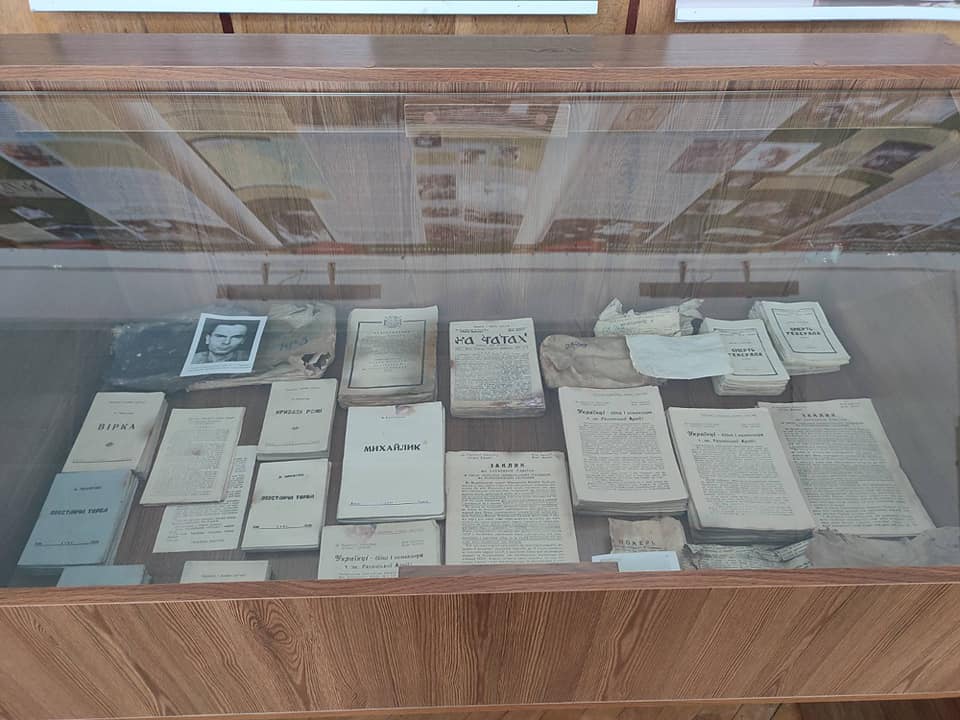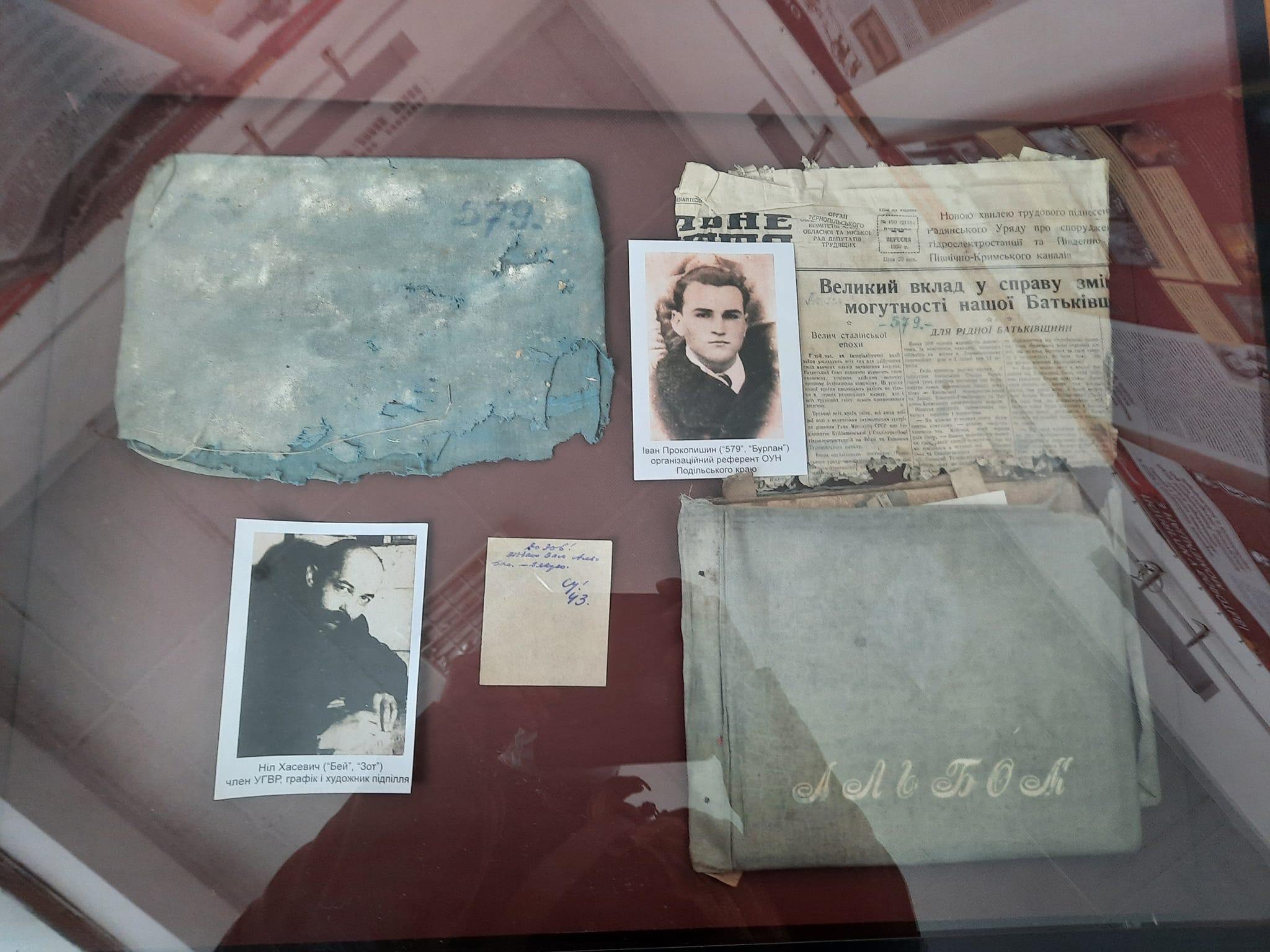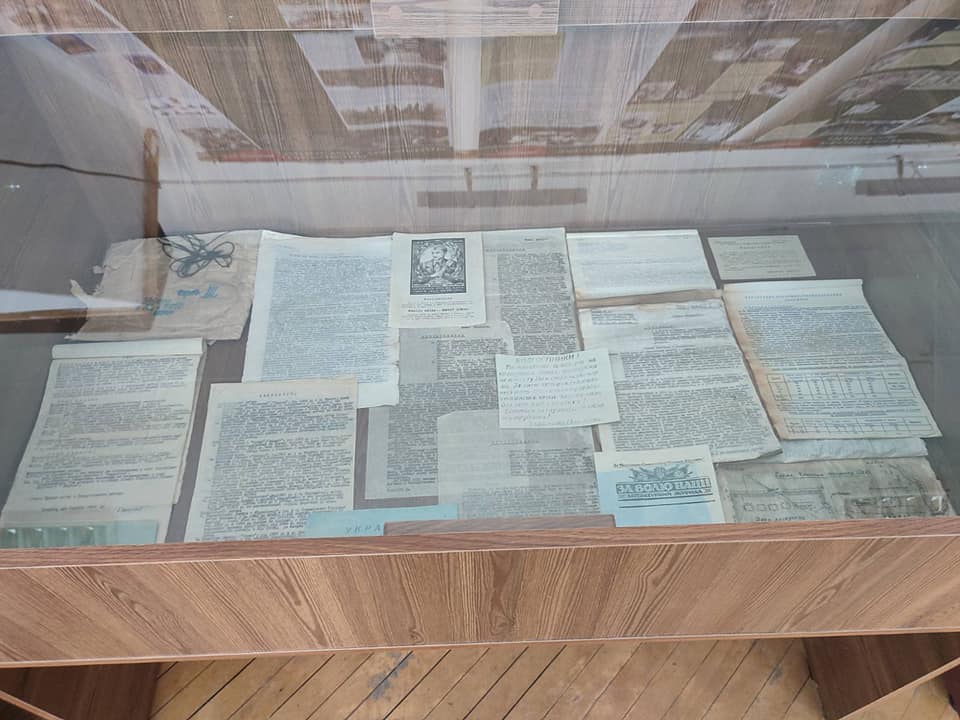Yuriy Syrotyuk, director of the Ukrainian Institute for Strategic Studies, reports that the three milk cans also contained a most valuable find – over 20 previously unknown sketches by Nil Khasevych, a Ukrainian graphic artist, public and political figure, member of the OUN (Organization of Ukrainian Nationalists) and the UHVR (Ukrainian Supreme Liberation Council). Khasevych is often referred to as the “image-maker” of the Ukrainian Insurgent Army (UPA) because he created its visual identity by designing its leaflets, posters, and awards.

History in milk cans
Civilian diggers Andriy Khrunyk and Andriy Ostap found the milk cans in Berezhany Raion, Ternopil Oblast. More specifically, in the forest near the village of Malinivka, at a distance of 1.5 km from the main road.
The first milk can was found on October 13, 2021 at a depth of 40 cm, and the second and third – on October 14, 2021. The milk cans had been arranged in a triangle and buried at a distance of 10m from each other.
Among the personal objects unearthed by the diggers were: an embroidered shirt, a camera, pins, thread, publications of the OUN and UPA underground movements, leaflets, appeals, bofons (one-sided monetary documents issued by the OUN and UPA), brochures, and a library comprised of Soviet books.
The highlight of the find was an album with original graphic works by Nil Khasevych, a famous Ukrainian graphic artist, member of the OUN, UPA, and the UHVR. The album contains over 20 of his sketches and drawings made in collaboration with students and graphic artists of the Ukrainian underground movements.
Other important materials include reports from OUN field headquarters, dated 1949-1951: from Ternopil Lviv and Volyn regions.
On October 17, 2021, Yevhen Fil, director of the Museum of Ukraine’s Struggle for Independence and Roman Stets from the Geodetic Services, cordoned off the area and photographed the dig and surrounding territory.
“Among other things, the milk cans revealed portraits of OUN leader Stepan Bandera and the UPA commander Dmytro Kliachkivsky, call sign “Klym Savur”, “Okhrim”. There are also many sketches depicting our country’s liberation movement throughout history: the Princely Era, the Kozaks, partisans, the enslavement of the peasant class through Stalin’s forced collectivization policy, the heroes of the Battle of Kruty, etc.” states museum director Yrvhen Fil.
The milk cans were then transported to Ternopil where, from October 17 to November 15, museum staff sorted, labeled and recorded the objects and documents.
Digital names instead of call signs
Digital names were found on most of the packages, documents and envelopes. In fact, such digital names were widely used for documents by the military wing of the OUN, whereas call signs were employed more on a personal basis.
Many documents were signed by “579”, which belonged to the organizational officer of the Podillya OUN branch Ivan Prokopyshyn (call sign “Burlan”, “Modest”; born in the village of Telyache, now Myrne, Pidhayetsky Raion in 1924), who was killed in action on November 6, 1951 near the village of Temnohaytsi, Shumsky Raion. “Burlan” received several awards and was appointed political educator by the UPA General Staff.
In 1949-1951, the extensive region of Podillya counted as an important territorial unit of the OUN. It included the regions of Chortkiv, Ternopil, Kremenets, Kamyanets-Podilsky and Vinnytsia.
Some other packages and envelopes were marked with such digital names as “Д-48”, “СК-9”, “КР-3” (“D-48”, “SK-9”, “KR-3”).
“D-48” – digital name of Yosyp Demchuk (“Luhovy”, “Strila”; born in the village of Petrykiv, Ternopil Oblast in 1923), who was responsible for building and promoting the OUN movement in Vinnytsia region. He was arrested by the Soviet secret police in February 1951 and tortured incessantly until his death on October 22, 1952.
“SK-9” – digital name of Mykhailo Kachanivsky (“Kachur”, “Skob”), OUN leader in Kamyanets-Podilsky region; arrested in November 1951.
“KR-3” – digital name of Ilyariy Skazinsky (“Kryha”, “Tymchuk”), who served as OUN leader of Chortkiv region and also worked in the OUN regional propaganda centre of Podillya. He was arrested by the Soviet secret police in May 1951 and publicly executed in Chortkiv on October 28, 1951.
A number of digital names have not yet been deciphered, but museum workers, historians and scientists from Ternopil, Kyiv, Lviv and Rivne have joined local experts to explore and research the precious historical material.
A special exhibit of the historical discovery was organized on December 14, 2021 at the Museum of the National Struggle for Independence in Ternopil. It was attended by local personalities, experts, historians and hundreds of locals, who lined up to view the documents and photos revealed by this extraordinary find.
“The history of liberation movement in Ternopil region is truly unique and the discovery of these archives opens new pages in the history of Ukraine’s fight for freedom and independence. This exhibition is a bridge between the past and the present. I hope that many people will be able to see it and learn more about this page of Ukrainian history.” said Deputy Head of the Regional State Administration Viktor Ustenko.
It should be noted that, due to the increased activity of professional and illegal diggers who scour the vast forest and fields of Western Ukraine, more and more precious documents are being unearthed and subsequently studied by historians, scholars and students.
And what about Central and Eastern Ukraine? For decades on end, Ukrainians in Eastern Ukraine have been told that the UPA and OUN never existed in the Donbas and had no ties to the eastern regions. However, Ukrainian historians say that, in fact, there was a strong pro-Ukrainian movement in the Donbas and nationalist groups operated with the support of local residents.
Strong OUN movement operated in the Donbas during WW2, historians say
Who knows what priceless historical documents might be buried elsewhere?
Read more:
- Donetsk, Luhansk and Crimean natives in the ranks of the UPA | Euromaidan Press
- Mass grave of UPA soldiers unearthed in Lviv Oblast | Euromaidan Press
- Hundreds of UPA documents found in Ivano-Frankivsk Oblast | Euromaidan Press
- UPA underground bunker found in forest near Mykolayiv, Lviv Oblast | Euromaidan Press
- Mass graves of UPA & OUN partisans discovered in Ternopil Oblast | Euromaidan Press







































